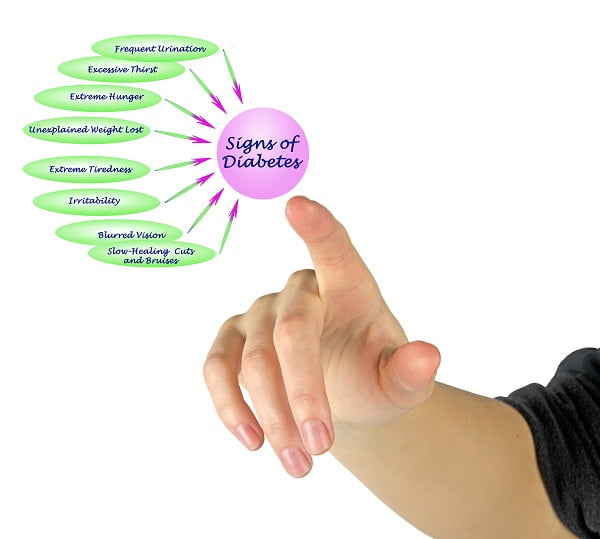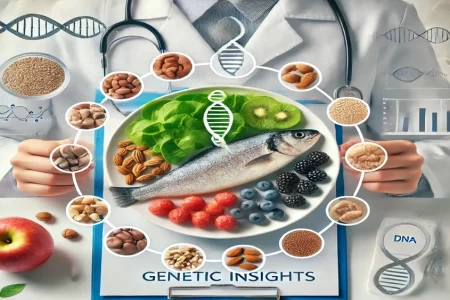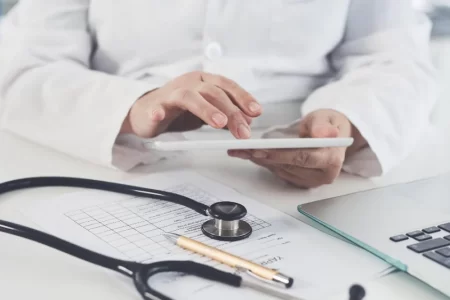What Are the Signs and Symptoms of Diabetes?
- Updated on: Jul 9, 2024
- 3 min Read
- Published on Sep 27, 2019

Are you worried that you or your child may have diabetes? Early symptoms of diabetes, in particular, type 2 diabetes, can be subtle. But, over time, over time, you may develop diabetes, even if you haven’t had any symptoms. Also, if you have some of the signs of diabetes, it doesn’t necessarily mean that you will definitely have the condition.
Learning about diabetes symptoms can help in early diagnosis and treatment which can improve the quality of life and your overall health. If you experience any of the following diabetes signs and symptoms, you should meet your doctor.
Diabetes Symptoms
The symptoms occur because at least some of the glucose stays in your blood and isn’t utilized for producing energy. The following symptoms of diabetes are typical.

Hunger and fatigue
When you eat food, your body converts it into glucose that is used by the cells for energy. But your cells require insulin to convert the food in energy.
If your body (pancreas) doesn’t produce enough insulin, or if your cells develop resistance for the insulin your body makes, your body has no or little energy. You will feel more hungry and tired than usual.
Urinating more often
An average person usually pees between five and seven times in a day. But people with diabetes may urinate more often.
Generally, your body reabsorbs glucose as it goes through your kidneys. When your blood glucose levels increase, your kidneys may not be able to absorb it completely. This causes frequent urination particularly at night.
Feeling thirsty
Because you urinate so much, you can get very thirsty. When you drink more water, you’ll also urinate more often.
Blurred vision
Changing fluid levels in your body can cause swelling of the lenses in your eyes. Their shapes change and the ability to focus is reduced.
Dry mouth and skin
When your body uses fluids to urinate more often, there’s less moisture in the body. This makes you dehydrated. Your mouth and skin may become dry. Dry skin can cause itchiness.
Infections
People with diabetes can get yeast infections. Yeast feeds on glucose and if there is too much of glucose in your body, you become vulnerable to yeast infections. These infections can cause itching around penis or vagina.
These infections can grow in any moist area of your skin such as:
- on skin folds
- between fingers and toes
- around and under breasts
- around penis and vagina
Other signs and symptoms
- cuts, sores, and wounds that heal slowly
- unexplained weight loss (occurs in type 1 diabetes)
- numbness in feet or legs
- episodes of thrush
- tingling pain in feet and hands (occurs in type 2 diabetes)
The signs and symptoms of type 1 diabetes are generally obvious and develop quickly.
But sometimes, when you have type 2 diabetes, these signs aren’t very obvious, and are often diagnosed only during a routine check-up.
Type 2 diabetes symptoms are often mild and develop gradually over several years. This means you may have type 2 diabetes for many years without knowing about it.
You must see your doctor without any delay if you think you may have diabetes. Early diagnosis and treatment for type 2 diabetes can reduce your risk of developing complications later on.
Read about testing and diagnosis of diabetes
Read about treatment of diabetes
Gestational Diabetes
Women with gestational diabetes generally have no symptoms. It is therefore important for pregnant women who are at risk to be tested at the proper time during pregnancy.
Hyperglycaemia
Type 2 diabetes develops when your pancreas is not able produce enough insulin to control your blood glucose level, or when the cells in your body develop resistance to the insulin that is produced by the pancreas.
In such a situation, your blood glucose levels may become very high, and you develop a condition known as hyperglycaemia. Hyperglycaemia generally occurs due to overeating or using ineffective diabetes medicines.
Symptoms of hyperglycaemia are similar to that of diabetes and may include:
- extreme thirst
- frequent urination
- fatigue
- infections
- weight loss
- vision problems











